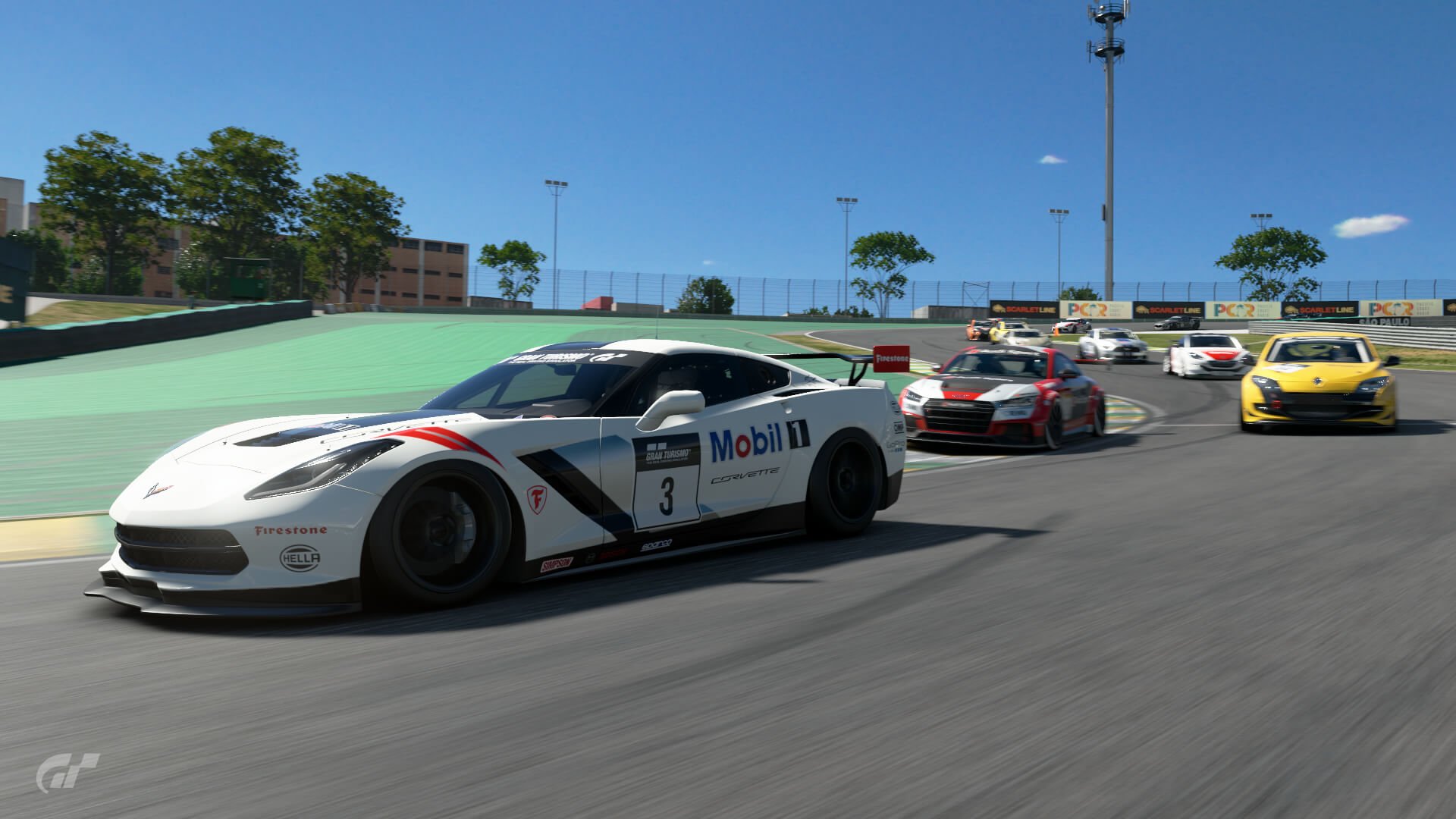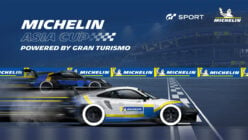Polyphony Digital has already confirmed the 2021 FIA Gran Turismo Online Championship and, although we haven’t seen an official calendar yet, preparations are well underway. That includes new Balance of Performance (BOP) calculations for the various vehicles involved ahead of the first racing action of the season.
The BOP changes, announced today, center on the Gr.4 and Gr.3 cars. These are the cars players will use most often, likely appearing in a number of the Nations Cup races alongside the cars’ role in the Manufacturer Series. They’re pretty dissimilar classes, with the Gr.3 cars — in common with their real-world GT3 equivalent — being exclusively rear-wheel drive, but the road car-based Gr.4s having a wide variety of drive train types. That makes the Gr.4 class particularly hard to balance, and it’s of little surprise to see around half the category receiving BOP tweaks.
A common complaint about Gr.4 is the dominance of the front-wheel drive cars. To compensate for their huge tire wear disadvantage, they have less weight than their rivals — which leads to them being overpowered in most races without tire wear. The BOP adjustments today see all four — the Audi TT, Peugeot RCZ, Renault Sport Megane, and Volkswagen Scirocco — get extra weight, with the Audi in particular piling on another 6%. Each has a small power boost, but overall their power-to-weight ratio is down by 5-10 hp/ton in each case.
There’s small weight gains for the Gr.4 Citroen GT, Honda NSX, and Porsche Cayman, while the Renault Sport Megane Trophy and Toyota 86 both lose 1% from their weight. In addition the Chevrolet Corvette and Dodge Viper lose 1% power. The main beneficiary is the Alfa 4C, which was on the receiving end of a BOP beating last time round. It now has 3% less weight, with 1% less power to prevent its return to the top of the pile from earlier in the game’s life.
Gr.4 BOP Changes
- Alfa Romeo 4C – Power 108% (▼); Weight 118% (▼)
- Audi TT Cup – Power 101% (▲); Weight 95% (▲)
- Chevrolet Corvette C7 – Power 92% (▼); Weight 107% (-)
- Citroen GT – Power 94% (-); Weight 113% (▲)
- Dodge Viper – Power 90% (▼); Weight 104% (-)
- Honda NSX – Power 95% (-); Weight 109% (▲)
- Peugeot RCZ – Power 102% (▲); Weight 92% (▲)
- Porsche Cayman – Power 94% (-); Weight 111% (▲)
- Renault Sport Megane – Power 96% (▲); Weight 96% (▲)
- Renault Sport Megane Trophy – Power 93% (-); Weight 123% (▼)
- Toyota 86 – Power 99% (-); Weight 106% (▼)
- Volkswagen Scirocco – Power 93% (▲); Weight 98% (▲)
There’s a much smaller range of vehicles affected in Gr.3, and it’s all about the power, with no adjustments to weight. Two cars gain a 1% boost, with the Renault Sport RS01 and Mazda RX-Vision GT both benefiting. The Aston Martin V12 Vantage, Dodge Viper, Hyundai Genesis, Lexus RC F (2017 model), McLaren 650S, and Volkswagen GTI VGT all lose 1%.
Gr.3 BOP Changes
- Aston Martin V12 Vantage – Power 111% (▼)
- Dodge Viper SRT – Power 81% (▼)
- Hyundai Genesis – Power 115% (▼)
- Lexus RC F ’17 – Power 106% (▼)
- Mazda RX-Vision GT – Power 95% (▲)
- McLaren 650S – Power 108% (▼)
- Renault Sport RS01 – Power 100% (▲)
- Volkswagen GTI VGT – Power 97% (▼)
All other values across all other classes are unaffected. The changes are already in effect following a maintenance period overnight, and start with this week’s new Daily Races.
See more articles on 2021 FIA GT Championship.











